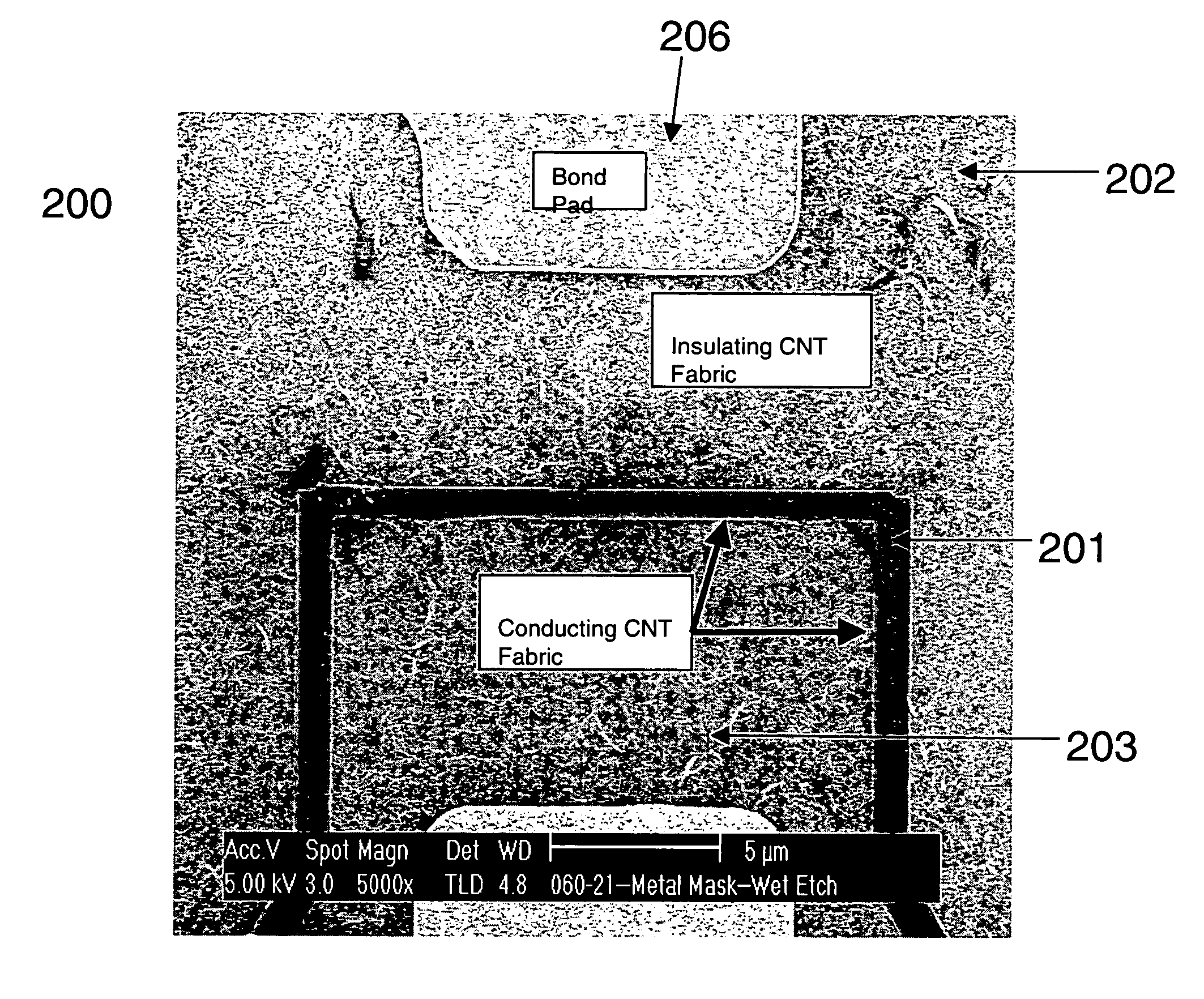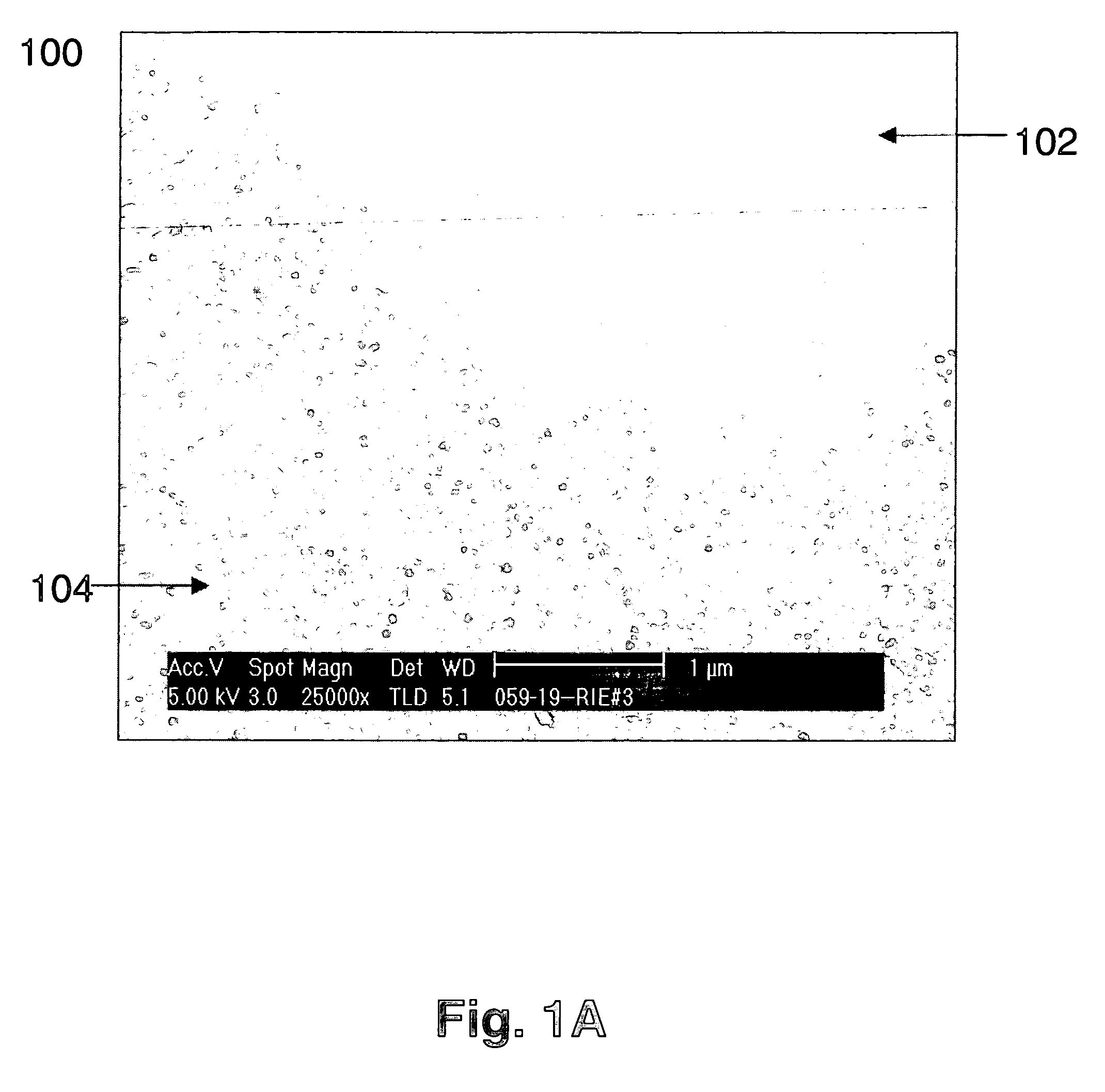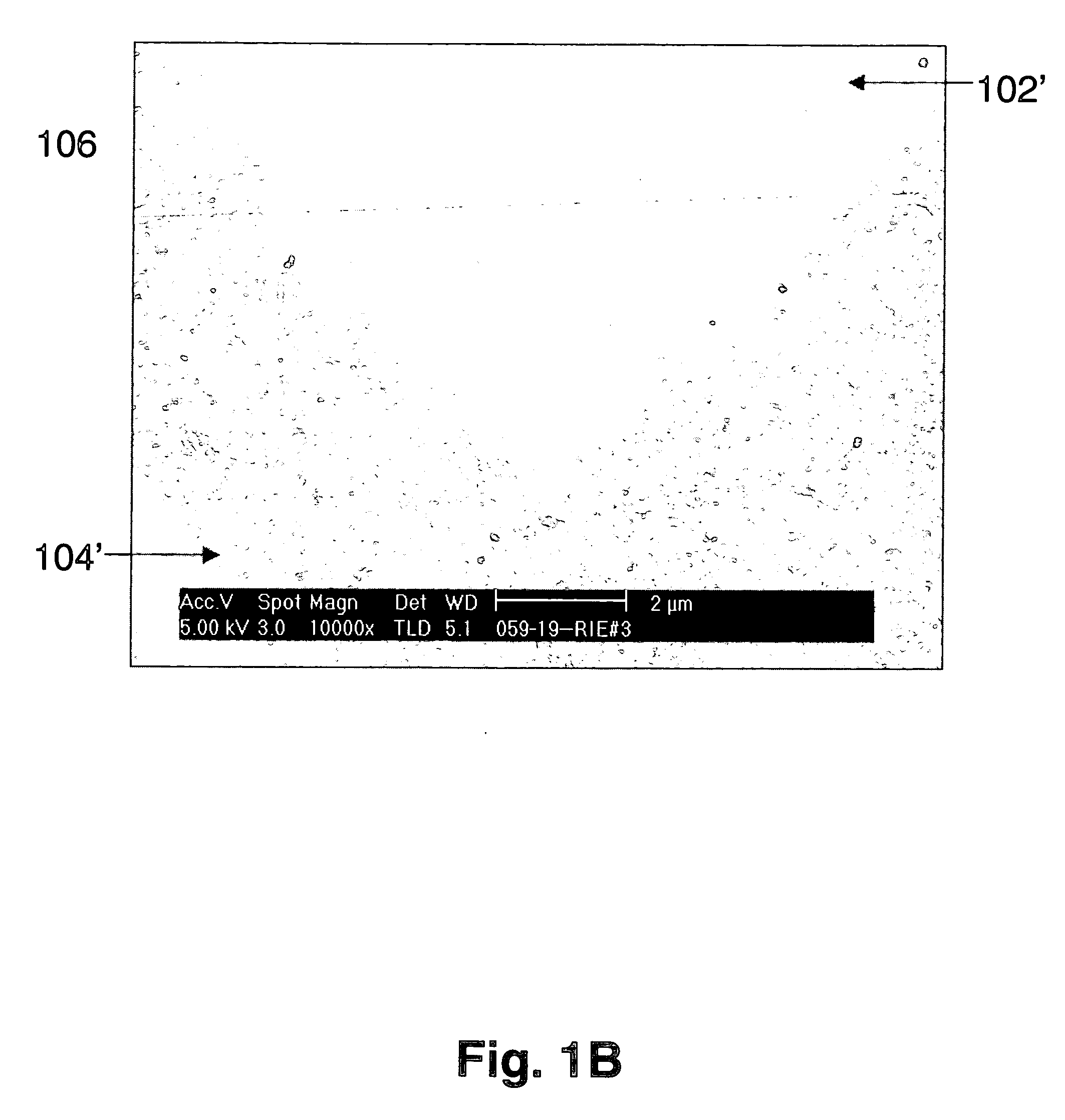Nanotube articles with adjustable electrical conductivity and methods of making the same
a technology of electrical conductivity and nanotubes, applied in the direction of fixed capacitor details, semiconductor/solid-state device details, weaving, etc., can solve the problem of reducing the electrical resistance of the layer of nanostructure, and achieve the effect of modifying the conductivity of the insulating nanotube fabri
- Summary
- Abstract
- Description
- Claims
- Application Information
AI Technical Summary
Benefits of technology
Problems solved by technology
Method used
Image
Examples
example 1
[0088] A layer of carbon nanotubes from several nanometers up to a micron thick is applied to a substrate either by spray coating, spin coating, dip coating, etc. The carbon nanotubes are then exposed to a gas that provides reactive ions, e.g., CF4, CHF3, H2, CH4, SF6, Ar, BCl3, Cl2, CCl2F2, SiCl4, C4F8, HBr, and mixtures thereof, as described in greater detail above, in a reactive ion etch chamber. The reactive ions react with the carbon nanotubes, modifying the nanotubes' electrical conductivity. The nanotube layer can be converted to a high resistance nanotube layer, or it can be converted to an intermediate resistance nanotube layer. Selection of plasma power in the RIE chamber, reactive ion density and reaction time, can minimize morphological damage of the CNT fabric while modifying the electrical properties as desired. As an example, a carbon nanotube fabric is sprayed onto a substrate to produce a low Ohm resistance fabric (4 gas is introduced at a pressure of 15 mTorr. The ...
example 2
[0089] The steps of Example 1 are repeated, and then, a mask pattern is fabricated on top of the CNT fabric by spinning, exposing and developing photoresist. The substrate containing the CNT fabric was exposed to RIE plasma (containing CF4 gas at 30 mTorr at 30 Watts for 30 seconds). Unprotected portions of the CNT fabric were fully converted to an insulating fabric, while the mask prevented the underlying portion from being converted to a non-conducting CNT fabric. After RIE plasma exposure, the patterned mask was removed, leaving a defined region of patterned conducting CNT fabric within an insulating CNT fabric.
Other Embodiments
[0090] An alternate embodiment involves the creation of dielectric features of carbon nanotubes (CNTs) and nanotubes from a fabric initially including conducting nanotubes, or a mixture of conducting and semiconducting nanotubes.
[0091] In another embodiment, pinning of nanotubes onto the supports using an overlaid thin coating is done to prevent slippin...
PUM
| Property | Measurement | Unit |
|---|---|---|
| electrical resistance | aaaaa | aaaaa |
| resistance | aaaaa | aaaaa |
| resistance | aaaaa | aaaaa |
Abstract
Description
Claims
Application Information
 Login to View More
Login to View More - R&D
- Intellectual Property
- Life Sciences
- Materials
- Tech Scout
- Unparalleled Data Quality
- Higher Quality Content
- 60% Fewer Hallucinations
Browse by: Latest US Patents, China's latest patents, Technical Efficacy Thesaurus, Application Domain, Technology Topic, Popular Technical Reports.
© 2025 PatSnap. All rights reserved.Legal|Privacy policy|Modern Slavery Act Transparency Statement|Sitemap|About US| Contact US: help@patsnap.com



